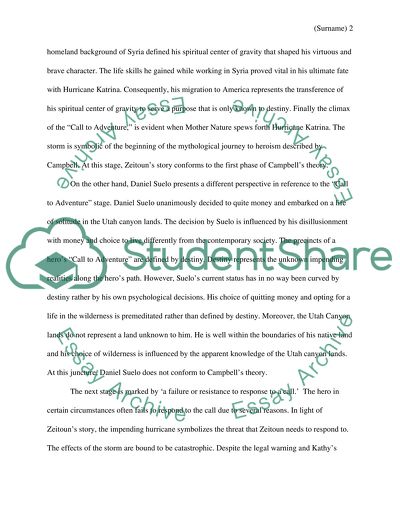Cite this document
(“Campbell`s Theory of Hero`s Adventures on the Example of Abdulrahman Essay - 2”, n.d.)
Campbell`s Theory of Hero`s Adventures on the Example of Abdulrahman Essay - 2. Retrieved from https://studentshare.org/literature/1604527-abdulrahman-zeitoun-and-the-hero-with-a-thousand-faces
Campbell`s Theory of Hero`s Adventures on the Example of Abdulrahman Essay - 2. Retrieved from https://studentshare.org/literature/1604527-abdulrahman-zeitoun-and-the-hero-with-a-thousand-faces
(Campbell`s Theory of Hero`s Adventures on the Example of Abdulrahman Essay - 2)
Campbell`s Theory of Hero`s Adventures on the Example of Abdulrahman Essay - 2. https://studentshare.org/literature/1604527-abdulrahman-zeitoun-and-the-hero-with-a-thousand-faces.
Campbell`s Theory of Hero`s Adventures on the Example of Abdulrahman Essay - 2. https://studentshare.org/literature/1604527-abdulrahman-zeitoun-and-the-hero-with-a-thousand-faces.
“Campbell`s Theory of Hero`s Adventures on the Example of Abdulrahman Essay - 2”, n.d. https://studentshare.org/literature/1604527-abdulrahman-zeitoun-and-the-hero-with-a-thousand-faces.


